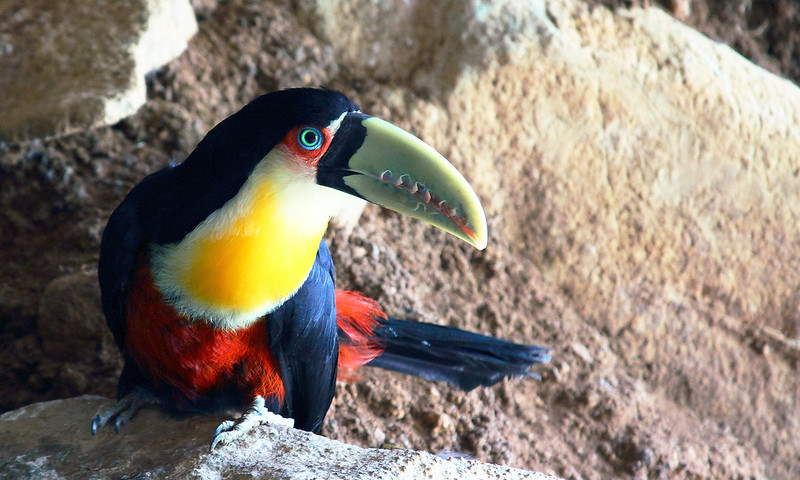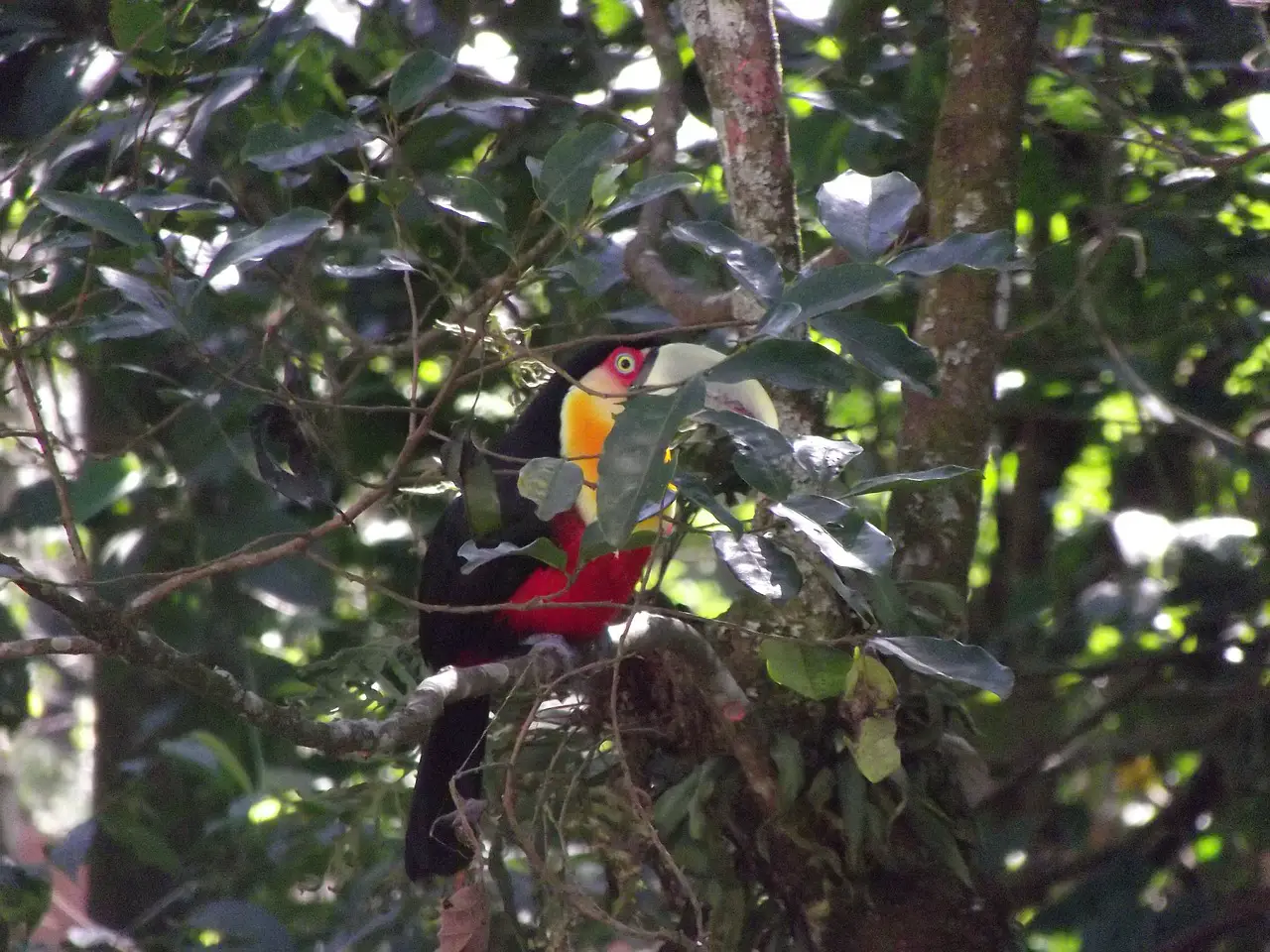The red-breasted toucan Ramphastos dicolorus is commonly known as the green-billed toucan. They are one of the smaller species of toucan measuring up to 40cm in length, with a bill that measures almost one-third of its length.

Daniel Garcia Neto Flickr CC BY 2.0
Description
The red-breasted toucan is similar to the channel-billed toucan. They have black upper parts with bright red upper tail and under tail coverts. The reddish underparts become black lower down on the belly.
Although its name suggests an area of red on the breast, it is more orange, more so than in other similar species. The black is confined to a narrow band.
They have red around the bare skin of the eyes and an emerald green bill with a ridge of yellow. The base of the bill is fringed with black.
They can be found in South America from northern Argentina through Paraguay and southeast Brazil.
The red-breasted toucan feeds on fruit plucked from trees along with a diet of insects, especially in the breeding period.
Do you want to know more about toucans? Find out here
Sounds
Red-breasted toucans are noisy birds and can be heard making a harsh croaking “grrekk” sound.
Nesting/Breeding
Red-breasted toucans lay between one and four, rounded, white eggs in a natural cavity in a forest tree high in the tree away from predators. They do not line the nest as their bills do not allow them to collect nesting material. Incubation is shared between the male and female who also both feed the chicks.
After a gestation period of eighteen days, the parents share the incubation time which is approximately sixteen days.
Chicks are born naked and are helpless for the first few weeks. The chicks are born blind and can see after three weeks. After eight weeks they may leave the nest to fend for themselves. When in the nest they are fed fruit from their parents.

